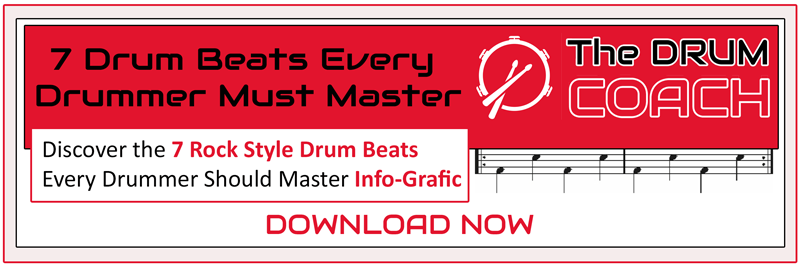![]()
So, you’re interested in drums how to play the basics and beyond? Awesome! Playing drums is a ton of fun and can be a great way to relieve stress. Plus, it’s a great party trick. 😉 But before you can impress your friends with your drumming prowess, there are a few basics you need to learn.
In this blog post, we’ll cover the absolute basics of how to play drums. But because we are covering the basics, I will keep this drums how to play the basics post short and too the point. Nothing complex will be included.
Let’s get started!
Drums How To Play The Basics – Hold The Drumsticks
The first thing you need to do is learn how to hold the drumsticks. There are two basic grips you can use – the matched grip and the traditional grip. The matched grip is when you hold the drumsticks in each hand in the same way. As you would if you were holding a pair of scissors. The traditional grip is when you hold the drumsticks in your right hand like you would a baseball bat. And in your left hand like you would a tennis racket.
Stance – Posture
Next up is your stance or posture. When you’re playing drums, you want to be sitting down on a drum stool or throne with your feet flat on the ground. If possible, try to sit with your thighs parallel to the ground. This will give you the most power and control over your limbs.
 The Hi-Hat
The Hi-Hat
Now let’s talk about the hi-hat. The hi-hat is a cymbal located on the left side of the drum set (if you’re facing the set). It consists of two cymbals mounted on a stand. One on top of the other – that can be opened and closed by pressing on a foot pedal. The hi-hat can be used to create a wide range of sounds, from soft ‘chick’ sounds to loud ‘crashes.’
The Bass Drum
Positioned on the right side of the drum set (when facing it), the bass drum rests on the floor, awaiting your rhythmic commands. It’s played by using a pedal that strikes a beater against the drumhead.
The bass drum is usually used for keeping time (also known as ‘keeping the beat’).
How To Play Drum Beats
Now that we’ve covered some of the basic elements of playing drums. Let’s put it all together and start playing some beats! Let’s start with a simple 4/4 beat:
count 1 2 3 4, 1 2 3 4, 1 2 3 4, 1 2 3 4, and so on. each 1-4 represents a bar of drumming/music.
1 2 3 4 | 1 2 3 4 | 1 2 3 4 | 1 2 3 4|
If you have a drum kit play the 1 2 3 4 using your right hand on the hi-hats. If you don’t have a drum kit tap your right hand on the table before you.
x x x x |x x x x |x x x x |x x x x |
Now, with your bass drum (sometimes called the kick drum, played with the right foot). Tap on bets 1 and 3. And tap your left hand on the snare drum (or table) on beats 2 and 4. So the combined kick drum and snare drum (right foot and left hand) pattern goes like this:
Kick Snare Kick Snare | Kick Snare Kick Snare | Kick Snare Kick Snare | Kick Snare Kick Snare|
Again, in this 4/4 beat, we’re hitting the bass drum on beats 1 and 3 (the “kick” sound) and on beats 2 and 4 (the “snare” sound). Practice this beat until you feel comfortable with it, then move on to more complex beats!
Conclusion:
Learning how to play drums is a great way to improve your coordination, relieve stress, and have a lot of fun. In this blog post, we covered some of the absolute basics of how play drums. Including how to hold the sticks, proper stance, and how to play a basic beat.
Now it’s time for you to practice what you’ve learned! Get behind that drum set and show everyone what you’ve got!






